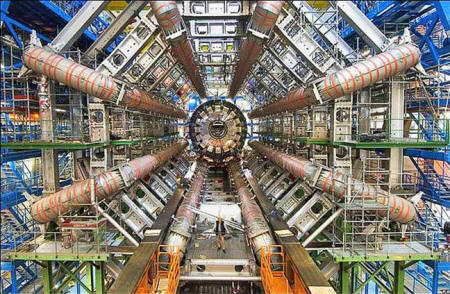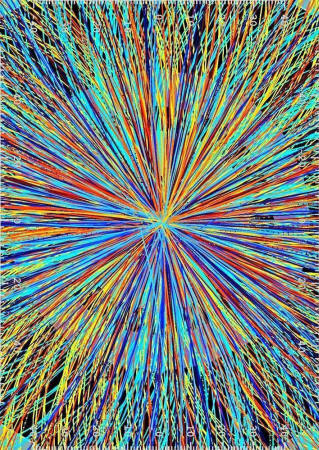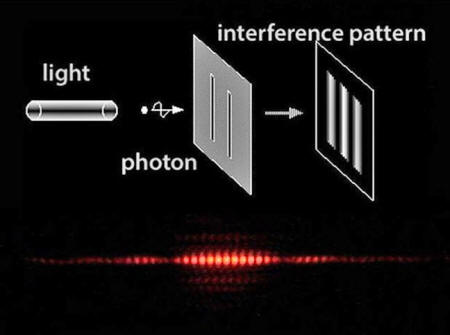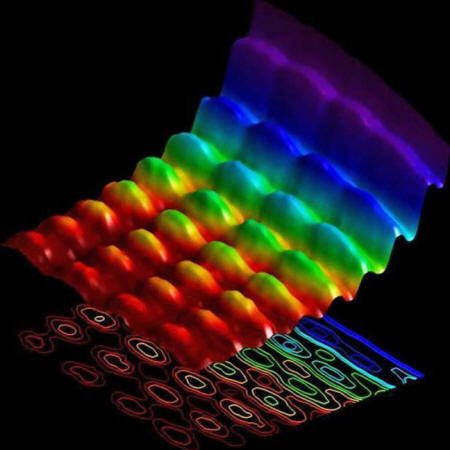|
from DigitalJournal Website
An experiment by Australian scientists has proven that what happens to particles in the past is only decided when they are observed and measured in the future.
Until such time, reality is just an abstraction...
Scientists speed particles around the Large Hadron Collider at near light-speed in search of the Higgs Boson particle, or "God's particle."
Quantum physics is a weird world. It studies subatomic particles, which are the essential building blocks of reality.
All matter, including ourselves are made up of them. But, the laws governing the tiny microscopic world seem to be different to those dictating how larger objects behave in our own macroscopic reality.
Quantum laws tend to contradict common sense.
At that level, one thing can be two different things simultaneously and be at two different places at the same time. Two particles can be entangled and, when one changes its state, the other will also do so immediately, even if they are at opposite ends of the universe - seemingly acting faster than the speed of light.
Particles can also tunnel through solid objects, which should normally be impenetrable barriers, like a ghost passing through a wall.
And now scientists have proven that, what is happening to a particle now, isn't governed by what has happened to it in the past, but by what state it is in the future - effectively meaning that, at a subatomic level, time can go backwards.
To bamboozle you further, this should all be going on right now in the subatomic particles which make up your body.
If all this seems utterly incomprehensible and sounds downright nuts, you're in good company.
Einstein called it "spooky" and Niels Bohr, a pioneer of quantum theory once said:
In this latest experiment, carried out by scientists at the Australian National University, lead researcher Andrew Truscott said in a press release that they have proven that,
Scientists have shown long ago that a particle of light, called a photon, can be both a wave and a particle by using the so-called double slit experiment. It showed that when light is shone at two slits in a screen, a photon is able to pass through one of them as a particle and both of them as a wave.
Australia's New.com.au explains,
Classic double split experiment
Quantum physics postulates that the reason for this is that a particle lacks definite physical properties and is defined only by the probabilities of it being in different states.
You could say it exists in a suspended state, a sort of super-animation until it is actually observed, at which point, it takes on the form of either a particle or wave, while still having the properties of both.
This was discovered when scientists carrying out double-slit experiments noticed that when a photon wave/particle is observed, it collapses, so it wasn't possible to see it in both states at once. Thus, it isn't possible to measure both the position of a particle and its momentum at the same time.
However, a recent experiment - reported in Digital Journal (see 'Simultaneous Observation of the Quantization and the Interference Pattern of a Plasmonic Near-Field') - has now captured an image of a photon as both a wave and a particle for the first time.
The first-ever image of light behaving as both a particle and a wave. Fabrizio Carbone/EPFL
As News.com.au puts it, the problems that still puzzles scientists is,
The Australian scientists set up an experiment similar to the double-slit one to try to estimate when particles took on a particle or wave form.
But instead of using light, they applied helium atoms, which are "heavier" than light photons, in the sense that photons have no mass, whereas atoms do.
This was significant they said.
Nevertheless, they expected the atom to behave just like light, meaning that it would take on both the form of a particle and/or a wave.
This time they fired the atoms at two grate-like forms created by lasers, although the effect was similar to a solid grate.
However, the second grate was only put in place after the atom had passed through the first one. And the second grate wasn't applied each time, only randomly, to see how the particles reacted differently.
What they found was that, when there were two grates in place, the atom passed through it on many paths in a wave form, but, when the second grate was removed, it behaved like a particle and took only one path through.
So, what form it would take after passing through the first grate depended on whether the second grate was put in place afterward. Therefore, whether it continued as a particle or changed into a wave wasn't decided until a future event had already taken place.
Time went backwards. Cause and effect appear to be reversed. The future caused the past. The arrow of time seemed to work in reverse.
The decisive point when its form was decided was when the quantum event was observed and measured. Before that, whatever would take place existed in a suspended state, the atom had not yet "decided" what to do.
Professor Truscott said that the experiment showed that,
There is also good evidence that quantum processes take place inside our brains and within our body cells, as reported by the The Guardian last year.
However, I wouldn't advise you to run at a wall to see if you can pass through it, and I doubt that what you're doing now is being decided by your future self already acting tomorrow.
Nevertheless, it would be nice if, on my next birthday, I became a year younger...
|





